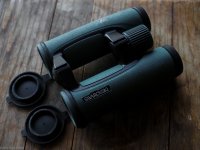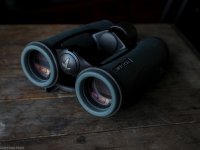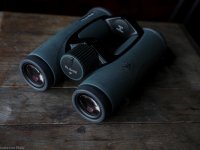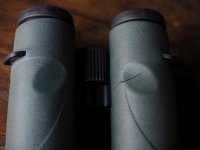Swaro reply:
The armouring material of Swarovski binos was changed 2015 with the new FP series due to environmental, cosmetic and allergic reasons.
The new material is - on a long term perspective - biodegradable. The new NL armouring is made out of the same material.
In general the new material overall has a better resistance and performance (Temperature, UV, humidity, abrasion) than the old one of the SV, but if it deteriorates, its damage behavior differs from the older material - due to the biodegradability. The old material blisterd the new gets softer and softer until it tears.
Prolongation of the armouring is possible if you apply a good cleaning and treatment of it, like for instance for leather. For the rare case of deterioration we offer a free replacement.











